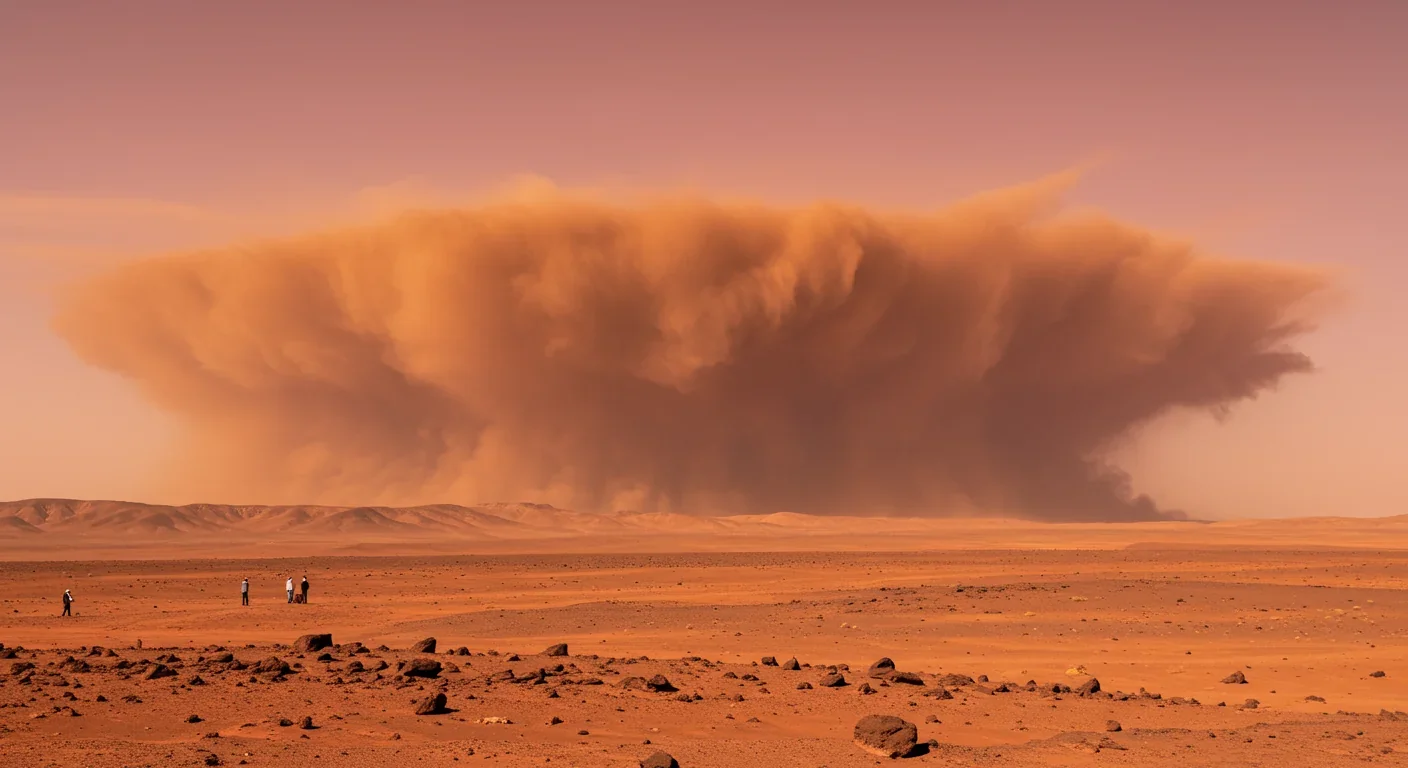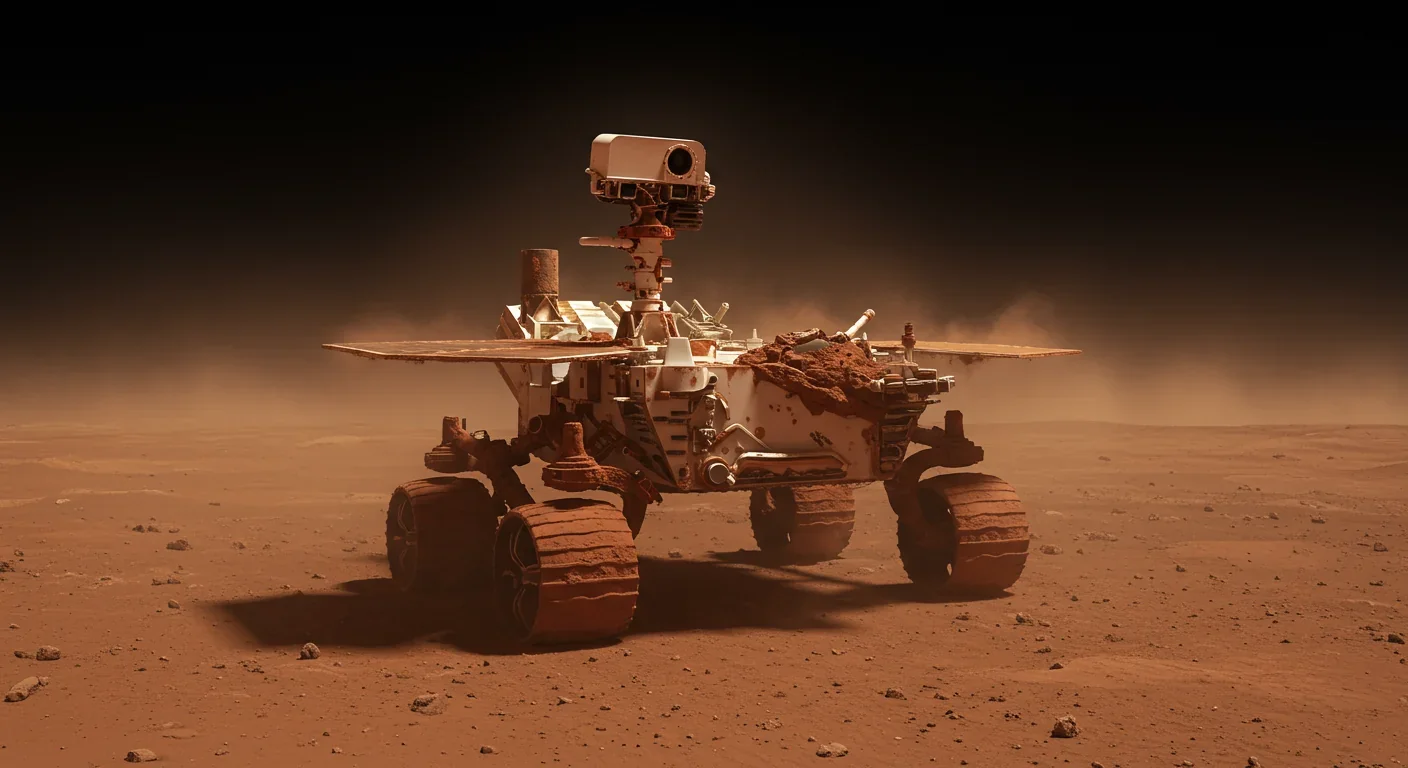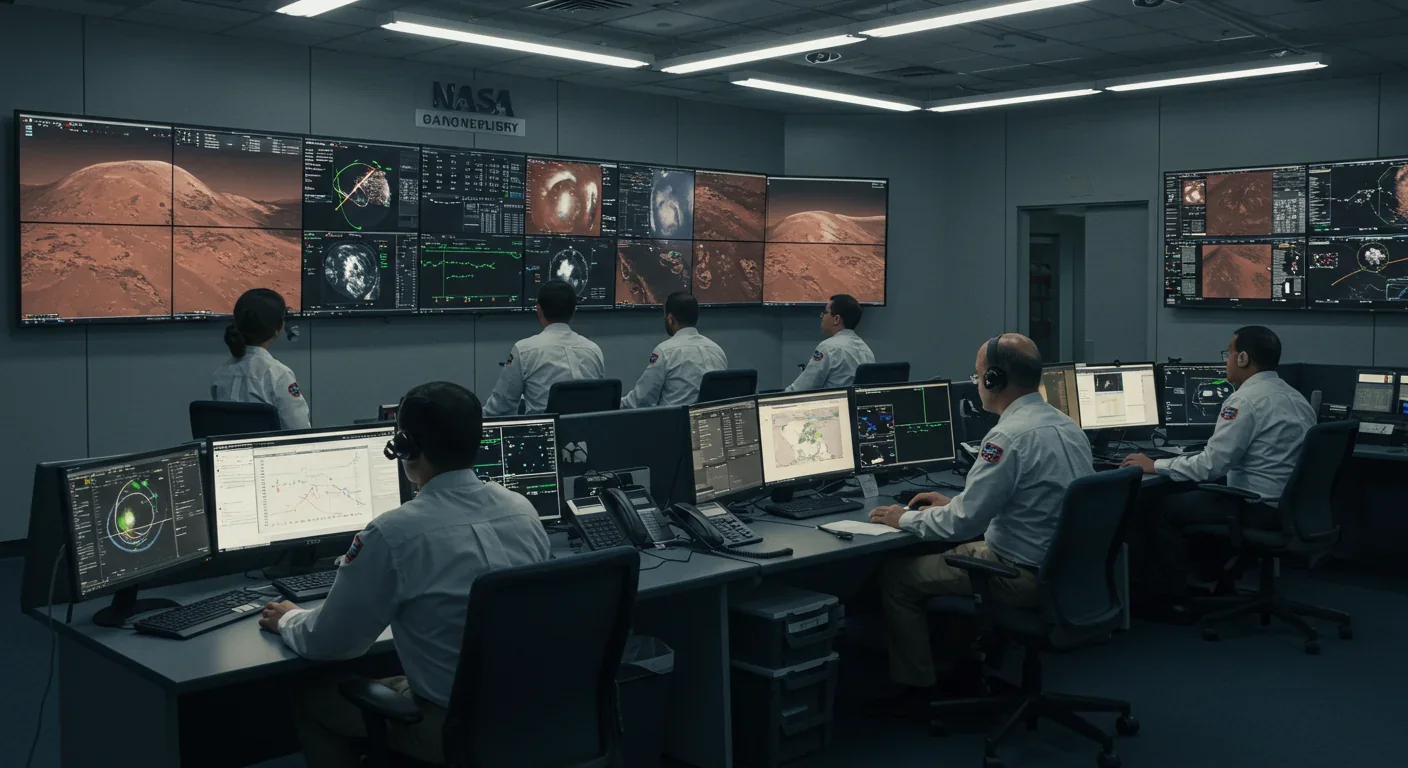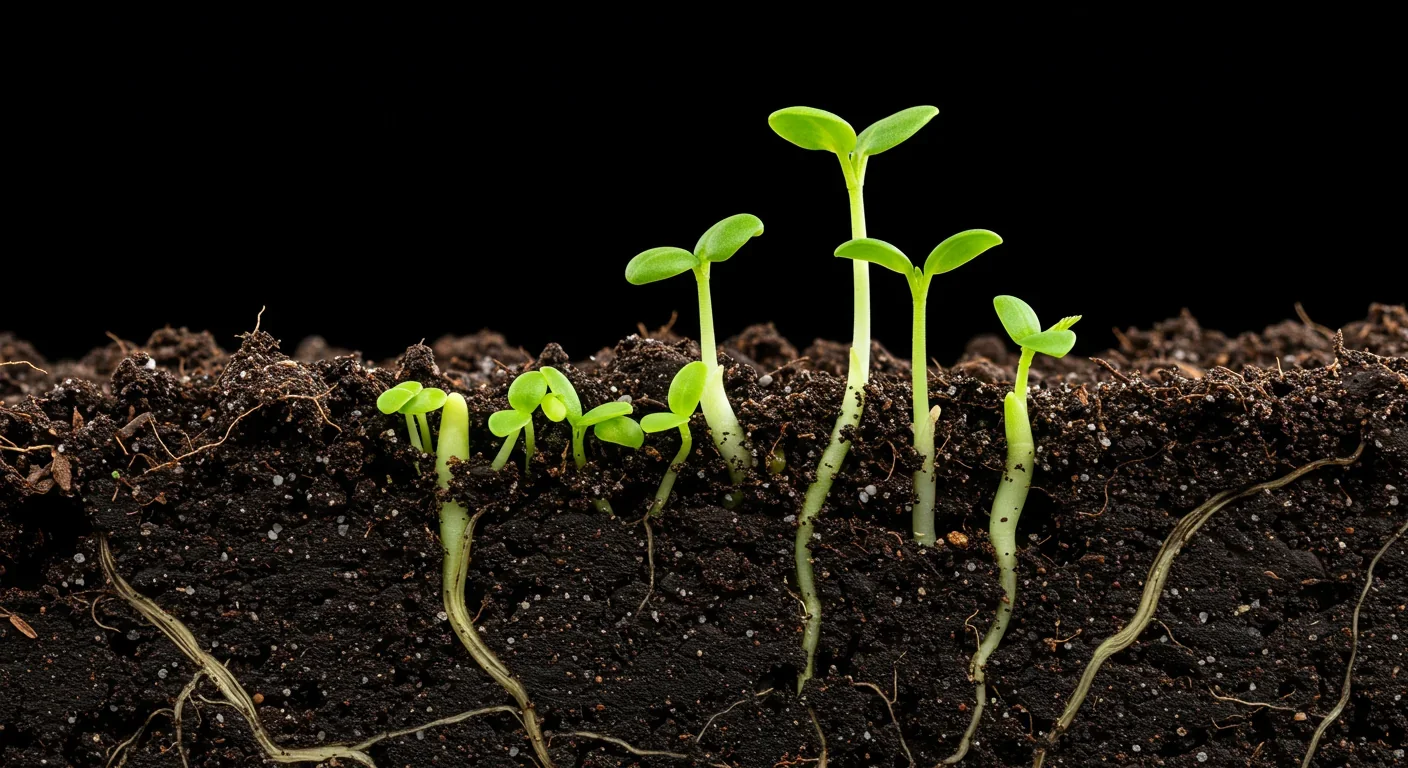Mars Methane Mystery: Hidden Microbes or Geology?

TL;DR: Martian dust storms can engulf the entire planet, blocking sunlight and killing solar-powered rovers like Opportunity in 2018. Engineers now use nuclear power for rovers, develop dust-resistant technologies, and improve forecasting to protect billion-dollar missions and prepare for future human exploration.

Picture this: you've spent fifteen years exploring an alien world, driving across ancient valleys, analyzing rocks untouched for billions of years. Then one day, the sky turns dark. Not nighttime dark, but something worse. A wall of dust, tall as Earth's atmosphere, racing toward you at highway speed. Your solar panels start failing. Within days, you can't generate enough power to keep warm. You send one last, incomplete image home. Then silence.
This isn't fiction. It's what happened to NASA's Opportunity rover in 2018. Martian dust storms aren't just weather, they're existential threats to billion-dollar missions and the future of human exploration.
Mars doesn't play by Earth's rules. With an atmosphere just 1% as thick as ours, you'd expect gentle breezes. Instead, you get planet-consuming monsters that make hurricanes look tame.
Here's the thing: Mars is a world of extremes. During southern hemisphere spring and summer, thermal gradients between sun-baked ground and ice-covered poles create temperature differences exceeding 100°C. That's Antarctica next to the Sahara. These contrasts drive winds that lift dust particles about 3 micrometers across, roughly 1/30th the width of a human hair.
What starts local triggers a feedback loop. Recent research shows that airborne dust absorbs solar radiation and heats surrounding air. Hot air rises, pulling in more wind from below, lifting more dust, heating more air. Within weeks, a regional storm can engulf the entire planet.
During the 2018 global dust storm, dust optical depth reached tau values of 5 globally, with local peaks hitting 10 or higher. A tau of 1 blocks about 63% of sunlight. At tau 5, you're looking at near-total darkness. NASA project manager John Callas described it: "The skies were incredibly dark, to the point where no sunlight gets through. It's night time during the day."
June 10, 2018. That's when Opportunity, after exploring Mars for over 5,000 Martian days, sent its last transmission. Not a farewell message, an incomplete image from its Pancam. The image came through dark, speckled with noise, the bottom third just black void where transmission stopped.
Designed for a 90-day mission, Opportunity lasted fourteen and a half years. But when the 2018 storm hit, starting as a regional disturbance in late May, it grew within two weeks to cover the entire planet.
Solar-powered rovers live on a knife's edge. The storm created a "power budget crisis." Without adequate charging, Opportunity entered low-power hibernation mode, shutting down everything except essential heating for Martian nights that reach -120°C.
NASA sent over 1,000 commands trying to wake the rover over eight months. They hoped solar panels would recharge when skies cleared. They never did. Engineers suspect the cold damaged critical electronics or the battery degraded beyond recovery. In February 2019, NASA declared the mission over.
The lesson was harsh: solar power alone isn't enough when global dust storms can strike with little warning and last months.
Dust storms threaten rovers through multiple attack vectors, each compounding the others.
Power starvation is obvious. When dust optical depth exceeds tau 2, solar panels lose 80% or more capacity. At tau 5, you're operating in darkness. For a rover needing 200-300 watts to operate and 100 watts to stay warm through the night, losing 90% of solar energy is catastrophic.
Thermal extremes sneak up. Dust acts as both blanket and shield. During the day, it blocks warming sunlight. At night, suspended dust can trap some heat, moderating lows slightly. But when power is scarce, even a "warmer" night at -100°C doesn't help if batteries are dead.
Communication blackouts add danger. Dust doesn't just affect visible light, it scatters and absorbs radio waves. While NASA's Deep Space Network usually maintains contact, the rover's ability to transmit weakens. Opportunity's final image was incomplete, transmission cut mid-send by a drained battery.
Dust accumulation is permanent. Mars has essentially no rain to wash panels clean. Dust devils sometimes provide natural cleaning and extended Opportunity's life. But during global storms, more dust settles than any devil can clear.
Electrostatic effects pose subtler risks. Martian dust is highly electrostatic, clinging through static charge rather than settling. It interferes with mechanical systems, seals, and electronics.

NASA learned from Opportunity's death. The two rovers currently operating, Curiosity and Perseverance, don't rely on solar panels. They're powered by Radioisotope Thermoelectric Generators (RTGs), nuclear batteries converting heat from decaying plutonium-238 into electricity.
RTGs are storm-proof. They generate about 110 watts continuously, regardless of weather. Curiosity sailed through the 2018 storm without issue. Perseverance doesn't register dust storms as operational concerns.
But nuclear power has trade-offs. Plutonium-238 is expensive and scarce, produced in limited quantities. Each RTG costs tens of millions and requires complex safety certifications. For smaller missions or large-scale infrastructure, RTGs aren't scalable.
That's where predictive monitoring becomes critical. Scientists are improving Martian weather forecasting. Orbiters continuously monitor atmospheric conditions. When regional storms form, they can often predict global potential, giving weeks of warning.
Dust-resistant designs are evolving. Engineers test hydrophobic and oleophobic coatings that make surfaces less attractive to dust. Electrodynamic dust shields use alternating electric fields to shake dust off surfaces. Tighter seals and self-cleaning mechanisms are in development.
There's discussion of hybrid systems: solar panels for baseline operations with battery banks large enough to ride out storms, supplemented by small RTGs for critical systems. More complex and expensive, but it hedges against multiple failure modes.
Curiosity and Perseverance represent current state of the art, but they're not invincible. While RTGs solve power problems, dust storms still create challenges.
Both carry sophisticated weather stations monitoring atmospheric conditions continuously. This data is operational, not just scientific. Mission planners use it to decide when to attempt high-power activities like drilling or long drives.
During storms, even nuclear-powered rovers scale back. Reduced visibility makes navigation harder, dust interferes with cameras and sensors, and there's always concern about dust intrusion. Curiosity has had drill mechanism issues engineers partly attribute to dust. Perseverance's sample-caching system is particularly sensitive to contamination.
Communication remains a weak point. Rovers keep operating, but data transmission degrades during major storms. Scientists might go days with limited imagery or telemetry.
And there's a psychological element. Every major dust event brings back memories of Opportunity's silence. Engineers watch power levels and communication signals with heightened attention.
If dust storms are dangerous for robots, they're potentially deadly for humans. Challenges multiply when people need to breathe, can't hibernate, and require constant life support.
Habitat protection becomes paramount. Human bases need to withstand dust infiltration into every seal and filter. Martian dust is toxic, containing perchlorate salts harmful to health. Breathing it could cause respiratory issues similar to silicosis.
Airlocks would need multiple dust removal stages: electrostatic removal, HEPA filtration, possibly whole-suit cleaning chambers. Apollo astronauts reported moon dust was nearly impossible to fully remove and smelled like burnt gunpowder.
Power systems for habitats would require nuclear reactors, not RTGs but fission reactors producing kilowatts. A crew of four to six needs at least 40 kilowatts continuously for life support, heating, water recycling, and equipment. Solar arrays large enough, plus battery banks for multi-month storms, would be prohibitively heavy.
Mobility during storms is questionable. Can astronauts venture out when dust optical depth reaches tau 5 or higher? Probably not safely. Navigation would be impossible, communication intermittent, risk of getting lost too high. That means weeks or months confined to habitats, psychologically demanding and operationally limiting.
Spacecraft and rovers need storm-hardened designs. The Mars Sample Return mission, planned for the 2030s, involves launching a rocket from Martian surface, never attempted before. Launch systems must remain functional after sitting through global storms: protected electronics, sealed fuel lines, active environmental controls for critical systems.

Accurate long-range forecasting is the holy grail. If we could predict global dust storms months ahead, mission planning would become dramatically safer.
Progress is happening. Scientists identified seasonal patterns: global storms tend during southern hemisphere spring and summer, when Mars is closest to the Sun. They occur roughly every three to four Martian years, though irregularly. The 2018 storm was overdue by some models.
Researchers are identifying precursor conditions suggesting when regional storms might go global. Certain combinations of temperature profiles, dust loading, and wind patterns favor expansion. Machine learning models trained on decades of observations are improving.
But Mars keeps surprising us. The atmosphere is chaotic, sensitive to small perturbations cascading into major events. A dust devil in the wrong place might seed a regional storm. Or a storm looking primed to go global might fizzle unexpectedly.
Still, even probabilistic forecasts help. If models say 60% chance of major storm in thirty days, planners can postpone risky operations or prepare crews to hunker down. Not perfect, but better than being blindsided.
The engineering community isn't standing still. Next-generation solutions are moving from labs to mission planning.
Electrodynamic dust shields use transparent electrodes to generate traveling electric waves that lift dust particles and carry them to surface edges where they fall off. Early results show 90% or more removal within seconds using minimal power.
Advanced coatings leverage lotus leaf-like nanostructures making surfaces super-dustphobic. Dust particles can't grip and slide off with minimal energy. Combined with mechanical vibration, these surfaces could stay clean indefinitely.
Autonomous dust mitigation is perhaps most exciting. Future rovers might carry small drones or brush-equipped arms automatically cleaning solar panels when accumulation reaches critical levels. Perseverance's Ingenuity helicopter demonstrated Mars powered flight is feasible.
For human missions, in-situ resource utilization could help. Martian regolith can be processed to extract water ice, produce oxygen, manufacture building materials. Those same processes might produce electrostatic shields, dust-repelling coatings, or replacement seals and filters, reducing Earth resupply dependence.
Every Mars mission carries risks, but dust storms remain one of few threats affecting entire planets. As we transition from robotic exploration to human presence, margins shrink.
NASA envisions humans landing in the 2030s or 2040s. The Artemis program is partly a testbed for Mars technologies, including dust mitigation. Private companies have more aggressive timelines, though experts remain skeptical.
Whoever arrives first will face dust storms. Not if, but when. The difference between success and tragedy will be preparation: redundant power systems, robust forecasting, proven dust-removal technologies, and crews trained for weeks of confinement during planetary-scale storms.
Opportunity's loss was a warning shot. Mars doesn't care about billion-dollar investments or careful plans. The planet has its own rhythms, violent weather, and we're still learning to survive it.
But we're learning. Each mission, each storm weathered or not, teaches something new. Rovers following Opportunity carry her lessons in their design. Astronauts who eventually walk the Martian surface will carry them too, in training protocols and engineering systems built to withstand what killed their robotic predecessors.
When the next global dust storm rises, and it will, we'll be more ready than 2018. Not perfectly ready, Mars doesn't allow that, but ready enough to keep exploring, keep learning, keep pushing boundaries of where humans can thrive. Because that's what exploration means: facing the hostile unknown and figuring out how to not just survive, but flourish. One dust storm at a time.

Curiosity rover detects mysterious methane spikes on Mars that vanish within hours, defying atmospheric models. Scientists debate whether the source is hidden microbial life or geological processes, while new research reveals UV-activated dust rapidly destroys the gas.

CMA is a selective cellular cleanup system that targets damaged proteins for degradation. As we age, CMA declines—leading to toxic protein accumulation and neurodegeneration. Scientists are developing therapies to restore CMA function and potentially prevent brain diseases.

Intercropping boosts farm yields by 20-50% by growing multiple crops together, using complementary resource use, nitrogen fixation, and pest suppression to build resilience against climate shocks while reducing costs.

The Baader-Meinhof phenomenon explains why newly learned information suddenly seems everywhere. This frequency illusion results from selective attention and confirmation bias—adaptive evolutionary mechanisms now amplified by social media algorithms.

Plants and soil microbes form powerful partnerships that can clean contaminated soil at a fraction of traditional costs. These phytoremediation networks use biological processes to extract, degrade, or stabilize toxic pollutants, offering a sustainable alternative to excavation for brownfields and agricultural land.

Renters pay mortgage-equivalent amounts but build zero wealth, creating a 40x wealth gap with homeowners. Institutional investors have transformed housing into a wealth extraction mechanism where working families transfer $720,000+ over 30 years while property owners accumulate equity and generational wealth.

AlphaGo revolutionized AI by defeating world champion Lee Sedol through reinforcement learning and neural networks. Its successor, AlphaGo Zero, learned purely through self-play, discovering strategies superior to millennia of human knowledge—opening new frontiers in AI applications across healthcare, robotics, and optimization.